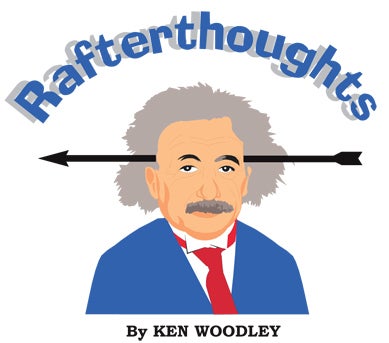The Trouble With Trashulations
Published 3:28 pm Thursday, September 22, 2011
Space may be a vacuum but the space around Earth needs a vacuum cleaner.
Space junk really is the final frontier.
Contrashulations to the crew of the U.S.S. Garbage Scow, your ten-year mission is to pick up all that trash circling Earth like an intergalactic gnat convention.
Klingons may eat food fit for taste bud-less warthogs but they were on target with their Federation-bashing trash talk. Captain Kirk's crew should boldly clean where no one has cleaned very well before.
According to a new report from the National Research Council, that's going to require more effort than cleaning up the bedroom of every teenager in the world. There are 22,000 pieces of debris large enough to be tracked from Earth, that's how big those articles of trash are lapping our planet. Sounds like a NASCAR race, doesn't it, when half the field is taken out.
But this is no trouble with trifles.
There are additional smaller pieces able to seriously damage the International Space Station (ISS), or anything else out there (in case you were thinking of a weekend away.)
This summer, in fact, debris came so close to the ISS that its crew were forced into their escape capsules, and probably clean space suits.
We almost beamed them out, Scotty.
Space junk travels over 17,000 miles an hour so a piece of trash doesn't have to be the size of a brick or Rhode Island to wreak havoc and endanger life. Imagine being hit in the face by a mere fly, but a fly traveling over 17,000 miles an hour.
If you were a phaser, your setting would be stunned.
So much trash is orbiting Earth that space safety is a serious concern. The NRC report warns that the volume of trash “has reached a tipping point, with enough currently in orbit to continually collide and create even more debris, raising the risk of spacecraft failures.”
Where does it all come from?
China placed a take-out order in 2007, but not for sweet and sour soup. The Chinese were testing ways to take out satellites and their test involved destroying a decommissioned weather satellite, according to the NRC report, blasting the satellite into 150,000 pieces larger than one centimeter.
Just another day of giving peace and tidiness a chance.
Then in 2009, two satellites ran into each other-probably piloted by Kurt Busch and Jimmy Johnson-and it was like some big debris ticker-tape parade to celebrate Earth Day and holistic navigation.
News reports quote Donald Kessler, the research team leader, as saying, “Those two single events doubled the amount of fragments in Earth orbit and completely wiped out what we had done in the last 25 years.”
As pieces of debris collide, they create more and more dangerous trash in orbit around our world, like politicians rubbing shoulders, elbows and who knows what at conventions.
The Pentagon is on the case, however, and one of its own agencies has produced a report appropriately called “Catcher's Mitt” that suggests a variety of clean-up options, including “harpoons, nets and an umbrella-shaped device that would sweep up the debris.”
You know, the stuff we all use at home to clean-up the house.
“Hey, honey, I'm going to harpoon the living room before your parents arrive. We want things looking nice. What should I do with Captain Ahab?”
The theory suggests that the “Catcher's Mitt” technologies would sweep the debris closer to Earth, so close that it would be pulled by Earth's gravity into the atmosphere, burning it up before it could knock us unconscious.
Let's hope so.
Or else push it into a higher, and therefore, safer orbit.
Safer for those not in a higher orbit like those cloaked alien ships we sometimes see.
But it's depressing to think about the landfill we are creating above our heads among the stars.
Make no bones about it, Mr. Spock, you just can't change human nature. Space travel is like any other journey we make:
Litter by litter, step by step.






